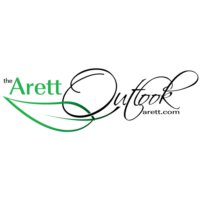Your Grass Is Hungry — Feed it!
 All grass really wants is a nutritious meal. Plants need regular feeding, just as humans do, to grow and develop. Feeding your grass 3 to 4 meals per season will help keep it soft and bare-footable for a picnic under the stars or a game of flag football with your family.
All grass really wants is a nutritious meal. Plants need regular feeding, just as humans do, to grow and develop. Feeding your grass 3 to 4 meals per season will help keep it soft and bare-footable for a picnic under the stars or a game of flag football with your family.
Why is feeding grass so important?
Just as we require nutritious food, so does your lawn. Simply put; grass needs nourishment. Regardless of the region or grass-type, lawns grow stronger, more resilient and greener when fed. Even if your grass looks great now, maintaining nutrition is important for continued success. Both your grass and you benefit from feeding – and that continues year after year.
- Less water needed. A well-fed lawn generally requires less water than an unfed lawn because roots are more developed, improving grass’s ability to absorb water and nutrients.
- Cleans the air. A well-fed lawn removes twice the amount of carbon from the air in one year than a tree in 10 years.
- Helps crowd out weeds. A well-fed lawn contributes to a deeper, denser and stronger root system that can better crowd out weeds.
- It makes economic sense. A well cared-for lawn not only looks good, but can also increase home value by up to 11% on average and provides your family with the softest play space for outdoor games of ‘catch’ and ‘tag’. Investing in your yard now can help avoid costly problems later.
Which food would my lawn like?
Grass benefits from a food specifically designed for lawns – especially when fed a slow-release lawn food with no fillers, like Scotts® Natural Lawn Food (S09 47503) or Scotts® Turf Builder® Lawn Food (S09 2006, S09 2016). You want your family to eat nourishing meals with no fillers, so treat your lawn to quality meals as well. Your grass will appreciate any kind of food as long as it gets a balanced diet of nitrogen, phosphorus and potassium—be sure to check the N-P-K numbers on the bag and ensure you are giving your lawn the right amount of each. Nitrogen helps ensure green foliage, phosphorus contributes to strong root growth, and potassium aids in turfrgrass hardiness and wear tolerance. All purpose fertilizers (10-10-10) can give established grass more phosphorus than it needs. Instead, look for low-P or ‘P-free’ lawn foods with N-P-K numbers more like 11-2-2 or 32-0-4.
How much lawn food will my grass need?
The easiest way to estimate the number of bags your lawn needs is by lawn size: home owners with an average subdivision lot will need to buy two 5,000 sq. ft. (small) bags and a 1 acre country lot will require three 15,000 sq. ft. (large) bags. Remember to set your spreader to the recommended setting listed in the directions on the back panel of the bag. Leftover food can be stored for your grass’ next meal.
When should I feed my lawn?
Lawns will benefit from feeding in any season, so don’t worry too much about timing—just feed it. Ideally, grass should be fed 2-4 times per year divided between spring, early summer, and fall so think of it like serving meals. In the spring, when grass is waking up from the dormancy of winter, feed it breakfast. In the summer, when your grass may be getting a bit worn out, feed it lunch. In the fall, just before the long winter’s rest, feed your grass a nice dinner to keep it nourished. If you miss a feeding, do not stress—just feed when you can.
How do I apply the food?
For nice even coverage, use a quality spreader, following package directions and spreader setting recommendations to apply any lawn care product. Simply set the spreader to the application setting recommended on the bag and in a few minutes your grass will be getting the nutrients it needs. For ease of application, try Scotts® EdgeGuard® DLX Broadcast Spreader (S09 76232). This spreader is easy to use and prevents product from being thrown onto landscaping, driveways, and sidewalks. When purchasing a spreader, remember that Scotts is the only lawn care company that manufactures lawn food and spreaders designed specifically to work together ensuring even distribution.
Where can I purchase these products?
Any nursery or hardware store will carry a selection of lawn care product, but don’t get overwhelmed. Cheaper bags of lawn food aren’t necessarily a better deal, many contain up to 40 percent fillers like sawdust, sand and gravel. Be sure to read the label before purchasing any lawn food. Check for unnecessary fillers and the correct square footage to ensure the highest quality and best dollar value.
For more information on feeding lawns go to: www.scottsadvantage.com or www.loveyourlawn.us
Order Now Using Program Number: S09D2
